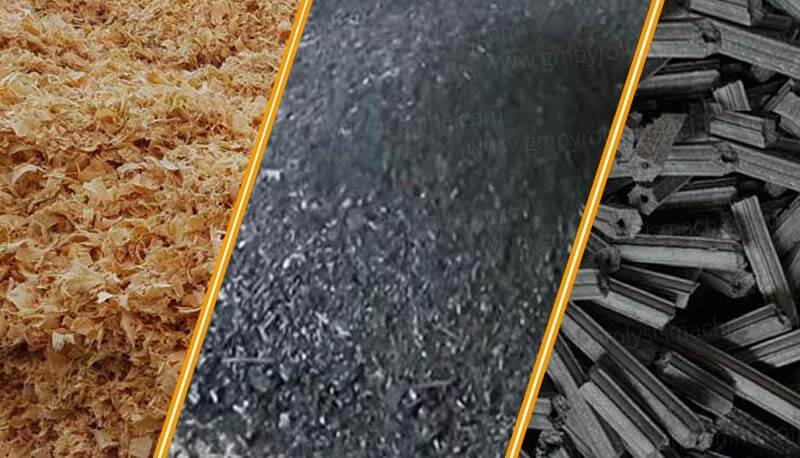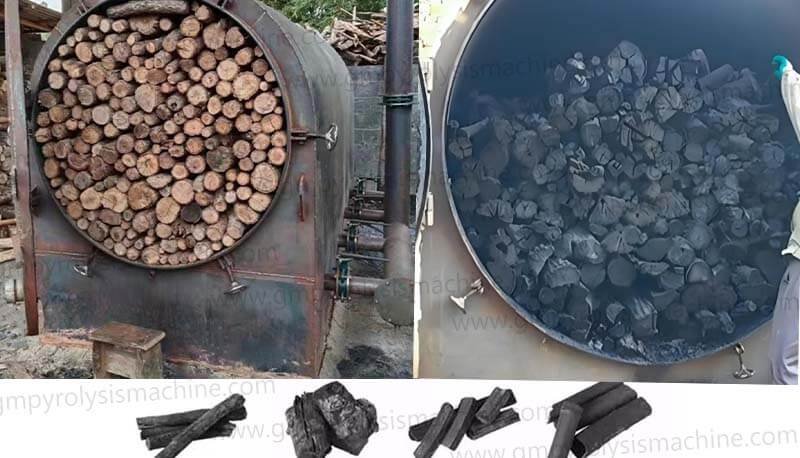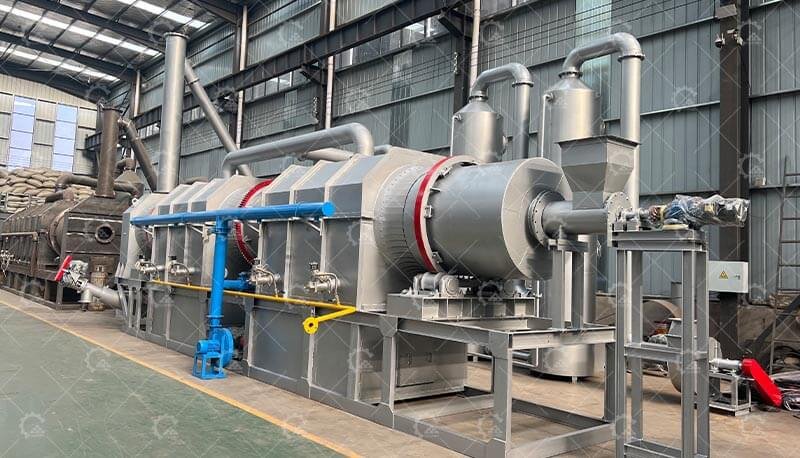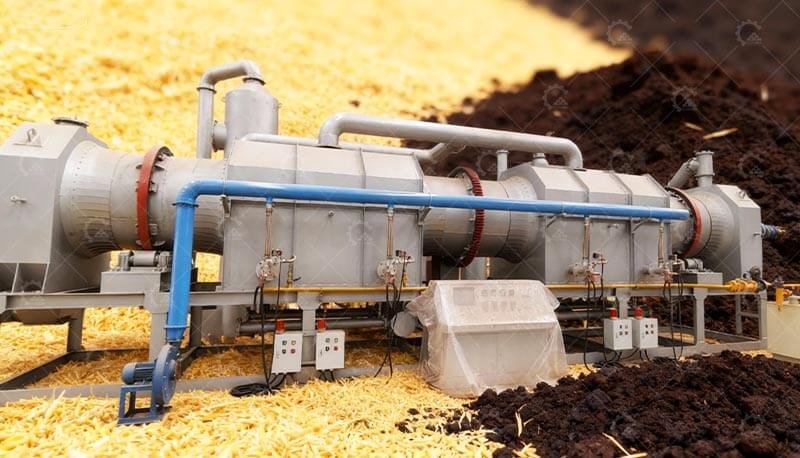Choosing the ideal sawdust carbonization machine is a critical decision that impacts your profitability, operational efficiency, and environmental footprint.
1. Define Your Production Goals & Raw Material
Capacity
Precisely determine your daily or monthly sawdust charcoal production target (e.g., 500kg/day vs. 10 tons/day). This directly dictates the machine size and type you need.
Sawdust Characteristics
Analyze moisture content, particle size, and consistency. High moisture (>20%) often requires pre-drying equipment. Finer sawdust may need specific feeding mechanisms. Ensure the sawdust charcoal machine is compatible with your feedstock.
2. Understand Core Carbonization Technologies
Batch vs. Continuous
Batch Carbonization Machine are simpler and lower initial cost but involve manual loading/unloading, longer cooling cycles, and inconsistent output. Continuous Carbonization Pyrolysis Machine offer automated feeding/discharging, higher efficiency, stable quality, and larger capacity – ideal for serious production. Guanma specializes in advanced continuous systems.
Heating Method
Direct heating is faster but risks product contamination. Indirect heating (using hot air or thermal oil) provides cleaner, higher-quality biochar or charcoal, crucial for certain markets.
Gas Recycling
Advanced machines capture and reuse pyrolysis gases as fuel, drastically reducing operating costs and emissions. Verify if the sawdust carbonization machine includes this sustainable feature.
3. Prioritize Efficiency & Energy Consumption
Thermal Efficiency
This measures how effectively the machine converts fuel (and pyrolysis gas) into heat for carbonization. Higher efficiency means lower fuel costs per kg of charcoal produced.
Power Consumption
Evaluate the electricity needs of motors (feeding, discharging, rotation, control systems). Energy-efficient designs lower ongoing OPEX.
Carbonization Rate & Yield
Ask manufacturers for expected charcoal yield percentages based on your sawdust type. A well-optimized sawdust charcoal making process maximizes output from input.
4. Evaluate Machine Construction & Durability
Material Quality
The reactor, especially, endures extreme heat and abrasion. Insist on high-temperature resistant, wear-resistant steel (like 310S stainless steel).
Insulation
Effective insulation minimizes heat loss (boosting efficiency) and protects the external structure and operators.
Sealing
Robust sealing prevents air leakage (ensuring oxygen-free pyrolysis) and stops harmful gases from escaping.
5. Factor in the Total Cost of Ownership (Beyond Price)
Sawdust Carbonization Machine Price
While upfront cost is important, it’s just one piece. A cheaper machine often costs more long-term through higher fuel consumption, frequent breakdowns, low yield, and short lifespan.
Installation & Commissioning
Consider site preparation, foundation, and professional setup costs.
Operational Costs
Calculate fuel, power, labor, and maintenance expenses. A machine with gas recycling drastically cuts fuel costs.
Maintenance & Spare Parts
Assess ease of maintenance and availability/cost of critical spare parts. Robust design minimizes downtime.
Expected Lifespan
Invest in a durable machine built for longevity; it offers far better ROI than replacing cheaper units frequently.
6. Demand Safety and Environmental Compliance
Safety Systems
Look for pressure relief valves, temperature sensors, alarms, and emergency shut-off protocols. Safety is paramount in high-temperature operations.
Emission Control:
Ensure the machine includes effective flue gas treatment systems (scrubbers, condensers, filters) to meet environmental regulations (like smoke, odor, particulate matter control). Guanma machines integrate comprehensive emission solutions.
7. Assess Automation & Control Level
Control System
Modern PLC control systems allow precise temperature regulation, automated sequences, and remote monitoring, leading to consistent product quality, reduced labor, and easier operation.
Automation
Features like automatic feeding, discharging, and gas recycling control streamline operations and minimize manual intervention.
8. Choose a Reputable Manufacturer (Like Guanma Machinery)
Experience & Expertise
Partner with manufacturers specializing in carbonization technology with a proven track record.
Engineering Support
Ensure they offer technical consultation tailored to your specific needs and raw material.
After-Sales Service
Reliable installation guidance, operator training, prompt spare parts supply, and responsive technical support are crucial for smooth, uninterrupted operation.
Pre-Purchase Checklist
Confirmed production capacity needs
Analyzed sawdust feedstock properties
Understood technology differences (Batch vs. Continuous, Heating method)
Compared thermal efficiency & energy consumption specs
Evaluated build quality, materials, and sealing
Calculated realistic ROI (including sawdust carbonization machine price, fuel, labor, maintenance)
Verified safety features and emission control systems
Checked automation level and control system
Researched manufacturer reputation, support, and service
Selecting the optimal sawdust carbonization machine requires careful analysis of your specific requirements, a deep dive into technology options, and a clear focus on long-term value over just the initial price tag. By prioritizing efficiency, durability, safety, and partnering with an experienced manufacturer like Guanma Machinery, you invest in a solution that transforms your sawdust waste into profitable, high-quality charcoal through a reliable and optimized sawdust charcoal making process.
Ready to find your perfect match? Contact Guanma Machinery today for a personalized consultation and discover our high-efficiency, reliable sawdust charcoal machines designed for maximum ROI.






